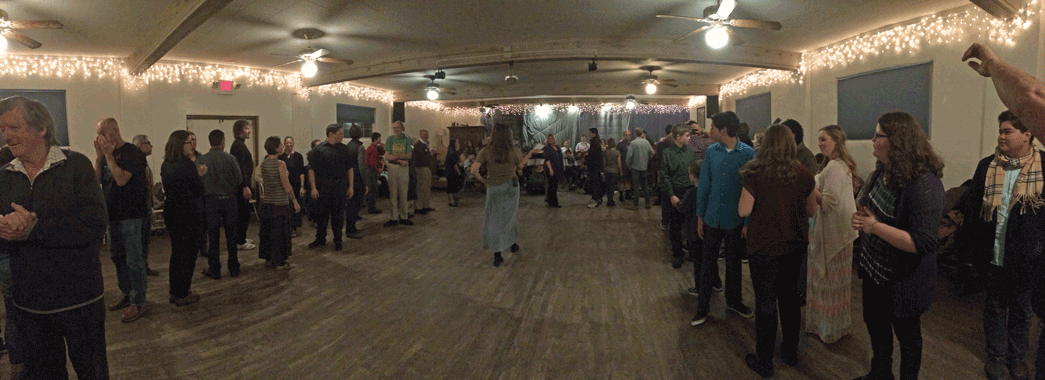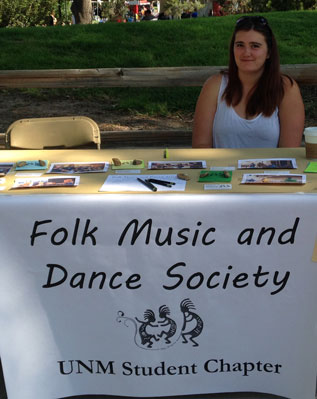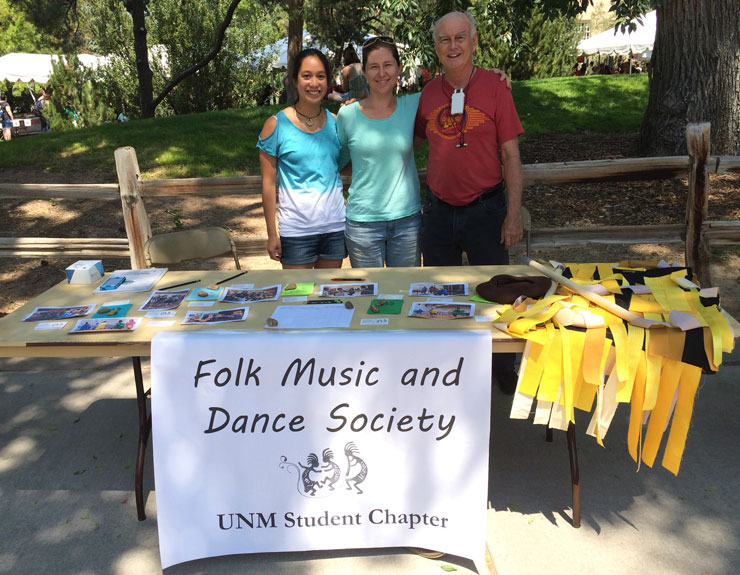President’s Contra Corner
How do we each improve as musicians, callers, and dancers, climbing up the Dreyfus model of skills acquisition, especially in the tacit knowledge related to music and dance? In lots of ways. Primarily by having a vision of where we want to be, observing objectively where we currently are, and taking action to bridge the gap between vision and reality. Andy Shore is a long-time MWSD caller from Santa Cruz, CA, and has been thinking about this for about a year and the ideas below started from his post.
But first, I think there’s a higher purpose to being great: to contribute to a robust and vibrant community of people who care for each other. And there’s lots of ways we can (and do) do that. In our FolkMADS Spotlight On project, we recognize our volunteers and talent for the gifts of their time, energy, and attention they give each week.
Intro: Helping your community by being your best
Set your best example. Be friendly and invite new people to dance, take hands four as you introduce yourself to your partner and neighbors, give your quiet attention to the caller during the walk-through, dance safely and with awareness, and show your appreciation for your fellow dancers, the caller, the band, and organizers.
Finding the vision of greatness
Dancing to other callers and bands throughout the world
Callers: Come early and attend another caller’s beginner lesson. During a dance’s walk through note the details they emphasize and leave out. How do they connect to the dancers and the band? Are they having a good time, or does it feel like a chore? How was the program in terms of variety, difficulty, energy (did they give the dancers a rest after a vigorous one)? How did they manage difficulties on the floor? Take notes when you learn something new and incorporate the best ideas. And always jot down the choreography of the dances you loved. Ask callers if you can record them to review their performance for which words they used, etc.
Dancers: Regions of the country have different styles and cultures and it’s valuable to see what these are and bring home the best aspects. How friendly are communities to new dancers? How was the general dance (skill) level on the floor? What made the dance experience great? Can you help recreate those best aspects in your home community?
Musicians: The same tune can be played in 100s of ways (Noah VanNorstrand showed me that at a fiddle workshop several years ago, repeating the A-part 30 times and never repeating a musical idea). What’s the character of the band? Do they gel? Do they watch the dancers or stare at their music? Do they respond to what the dancers need? How are their dynamics over the song? Do they tell a story? How is the tempo? How is the balance/dynamics between musicians? Are they having fun?
Seeking the best on the internet
While our FolkMADS page is a good source for local music and calling information, youtube generally is a great location for seeing the best dance calling, music, and dancing around the country. Videos can help a caller get clear about choreography and teaching, help a musician learn that squirrelly B-part of a new tune, or a dancer learn flourishes. In particular, SharedWeight forums for organizers and callers.
Objective self-observation
Whether you’re a caller, a member in the band, a sound person, an organizer, a volunteer, or a dancer, there are things you can do to observe how things went at a dance. Below I focus on callers (as that’s my expertise), but these ideas can be generally applied.
Post-dance self-debrief
Callers: Within a day, review what you called, what you adjusted, and how you think things went. If things crashed, why? If you realized a teaching moment in a dance, make a note. Was the difficulty and variety about right for the evening? How clear was the communication with the band? Did you and the band trust each other throughout the night? Did you make the dancers feel appreciated? Did the last dance leave the dancers wanting more?
During the dance, if you really liked the pairing of some tunes to a dance, ask the band for the name of that tune and write it on your dance card.
Friendly feedback
Callers: If you have a few trusted people whom you know can give specific and constructive feedback from (as we do in the NMCC), consider asking them at the start of the evening to make a few notes of situations where a different strategy might have had a better outcome. When giving feedback to another caller, keep it simple and positive unless they ask you otherwise.
A recording doesn’t lie
Callers: If you’re brave enough to really see and hear what your performance was like, set up a recorder (most phones have apps to record voice memos or video). It often doesn’t matter much if the sound or video quality is lousy if you’re only using the recording for self-evaluation. If audio-only, set up the recorder almost anywhere in the room. If video, try to get enough field-of-view to see yourself calling, the band, and part of a contra line; this will allow you to see how much contact you’re having with the band and how attentive you are to the dancers. Consider asking a friend to press play/stop between dances to make smaller file sizes (but do try to record between dances and the walk-throughs to capture the feeling of the entire experience).
When you review the recordings, practice some self-care and remember you’re doing this because you want to improve (not because you want to torture yourself). Remember that you will be more critical of yourself than of others, so try to give yourself a break and be forgiving. Consider splitting a paper into two sides for what worked well, and what could have been done better. Then listen to how you lined up the dancers, the walk through, starting with the band, calling, timing, phrasing, command and presence, and anything else about the dance experience that you played a role in. If you have a trusted friend, let them listen and make their own list and compare — they may help you see things less critically.
Setting goals and growing
Setting short-term goals
What do you want to do next time? Do you want to teach a ladies chain using fewer words and having everyone get it the first time? Do you want to be more aware of problems on the floor and to fix them while they’re small? Write that goal down and look at it before each dance to bring your attention to it — pretty soon you’ll develop a new positive habit.
Setting long-term goals
Promote the activity and yourself as a leader
Spread the word of your love of music and dance with your friends and online. Invite new people to join you. Keep a list of the dance evenings you’ve called or played for to establish your credibility. If you want to call at a dance camp, go to camps and see what it takes. Talk to the talent and organizers, offer workshops, contribute in meaningful ways, and tell the organizers you are interested.
Growing
Callers: Discussing calling with other callers is often a rewarding experience. Establishing a mentoring relationship (mentor/mentee or even mentee/mentee) can be even more so. You don’t have to be an expert to be a mentor, it’s enough to care, to be critical, and to care — caring is most important. If there are several callers in your area, consider forming a group and meet every month or so to practice calling and giving feedback (as we do in the NMCC). When you’re at a camp, attend calling workshop. Talk about calling with the featured callers. Sit out a dance and watch from the side of the stage how the caller works out the programming on the fly, communicates with the band, uses the microphone, etc.
Callers: Every so often, review your dance collection and purge the unloved dances, make notes on dances about teaching or placement in a program. Keep a record of your previous dance programs and review them with more experienced eyes.
Finally, give yourself permission to try something new and fail. You may be surprised how supportive our dancers are when things go wrong! If something bombs, take responsibility, apologize, and be creative to find a solution. Then reflect — that’s a golden learning opportunity!
Erik Erhardt, FolkMADS President




